Let \(a\) is a positive constant. Then a function of the form
$$f(x)=a^{x}$$
is called an exponential function with base \(a\).
Rules
| \(x\) | \(y=a^{x}\) | Example |
| \(x=0\) | \(a^{0}=1\) | \(3^{0}=1\) |
| \(x=n\), where n is a positive integer. | \(a^{n}=\overbrace{a\cdot a\cdots a}^{n\ \text{factors}} \) | \(2^{3}=2\cdot 2\cdot 2=8\) |
| \(x=r\), where r is a real number. | \(a^{-r}=\frac{1}{a^{r}}\) | \(2^{-3}=\frac{1}{2^{3}}=\frac{1}{8}\) |
| \(x=\frac{q}{p}\)(\(x\) is a rational number) where \(p\) and \(q\) are integers and \(p>0\) | \(a^{\frac{q}{p}}=\sqrt[p]{a^{q}}=(\sqrt[p]{a})^{q}\) | \(2^{\frac{5}{3}}=\sqrt[3]{2^{5}}=(\sqrt[3]{2})^{5}\) |
properties
Let \(a, b >0\) and \(n, m\) be real numbers.
| Properties | Example |
| \(a^{n+m}=a^{n}a^{m}\) | \(a^{2}a^{3}=(a\cdot a)\cdot (a\cdot a\cdot a)=a^{2+3}=a^{5}\) |
| \(a^{n-m}=\frac{a^{n}}{a^{m}}\) | \(\frac{a^{5}}{a^{3}}=\frac{a\cdot a\cdot a\cdot a\cdot a}{a\cdot a\cdot a}=a^{5-3}=a^{2}\) |
| \(\left(a^{n}\right)^{m}=a^{nm}\) | \(\left(a^{2}\right)^{3}=a^{2}\cdot a^{2}\cdot a^{2}=a^{2\times 3}=a^{6}\) |
| \((ab)^{n}=a^{n}b^{n}\) | \((ab)^{3}=(ab)\cdot (ab)\cdot (ab)=a^{3}b^{3}\) |
Graphs
| Figure 1 | If \(0<a<1\), \(y=a^{x}\) is a decreasing function. |
| Figure 2 | If \(a=1\), \(y=1^{x}\) is a constant function. |
| Figure 3 | If \(1<a\), \(y=a^{x}\) is an increasing function. |
| Figure 4 | Notice that \(y=\left(\frac{1}{a}\right)^{x}\) is the reflection of the graph of \(y=a^{x}\) with the respect to the y-axis, since \((\frac{1}{a})^{x}=\frac{1}{a^{x}}=a^{-x}\) |
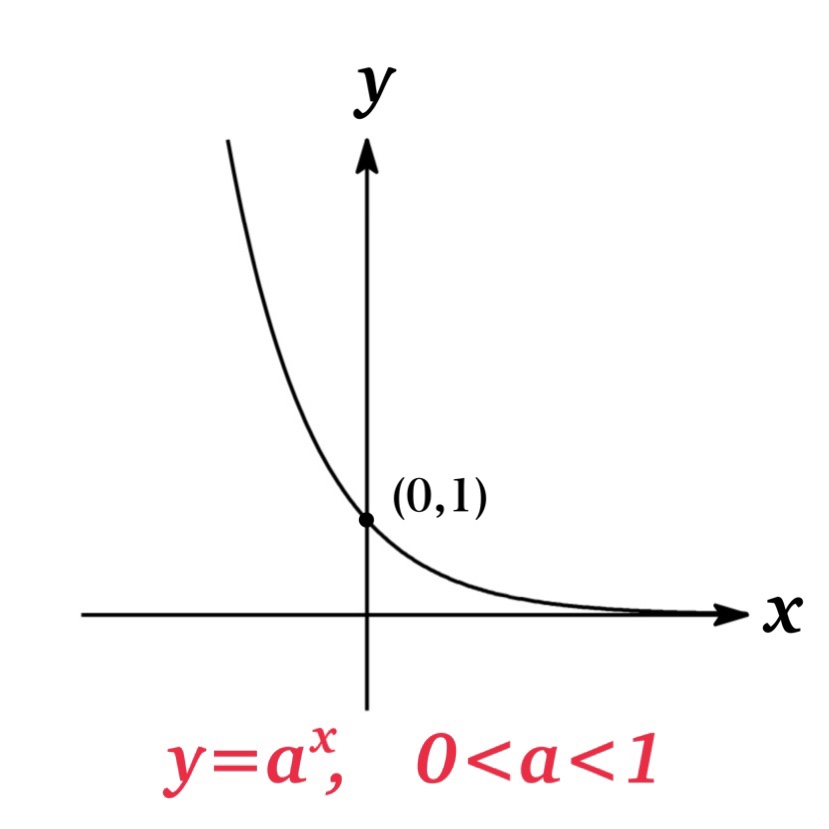
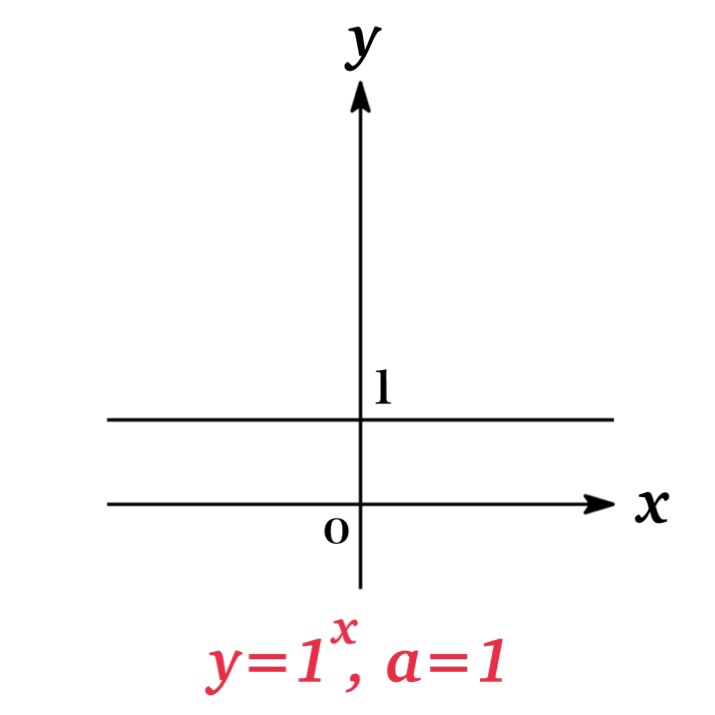
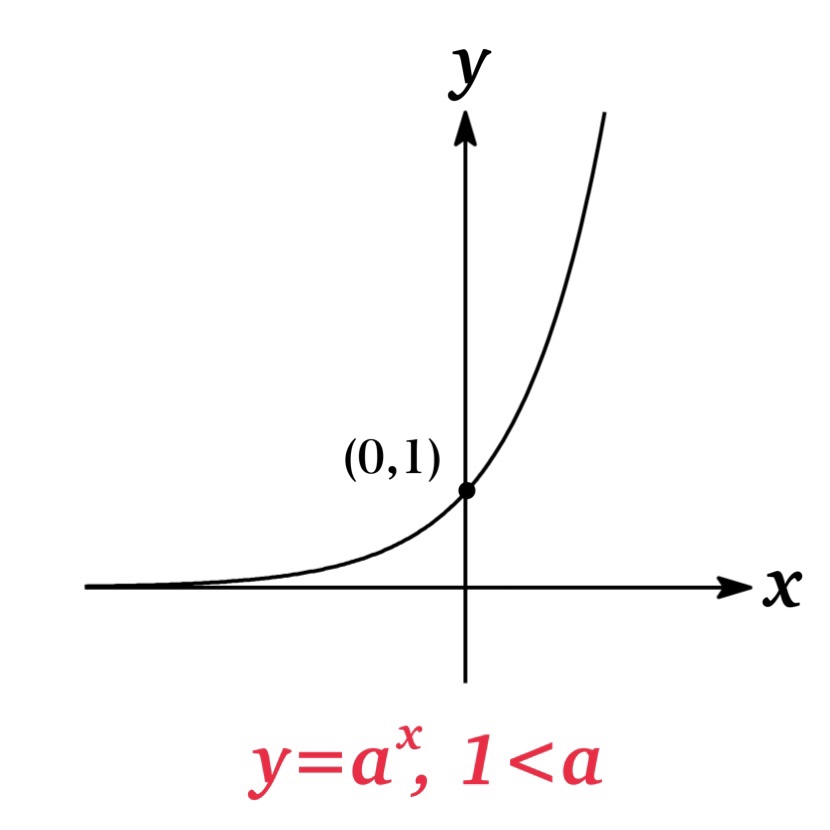
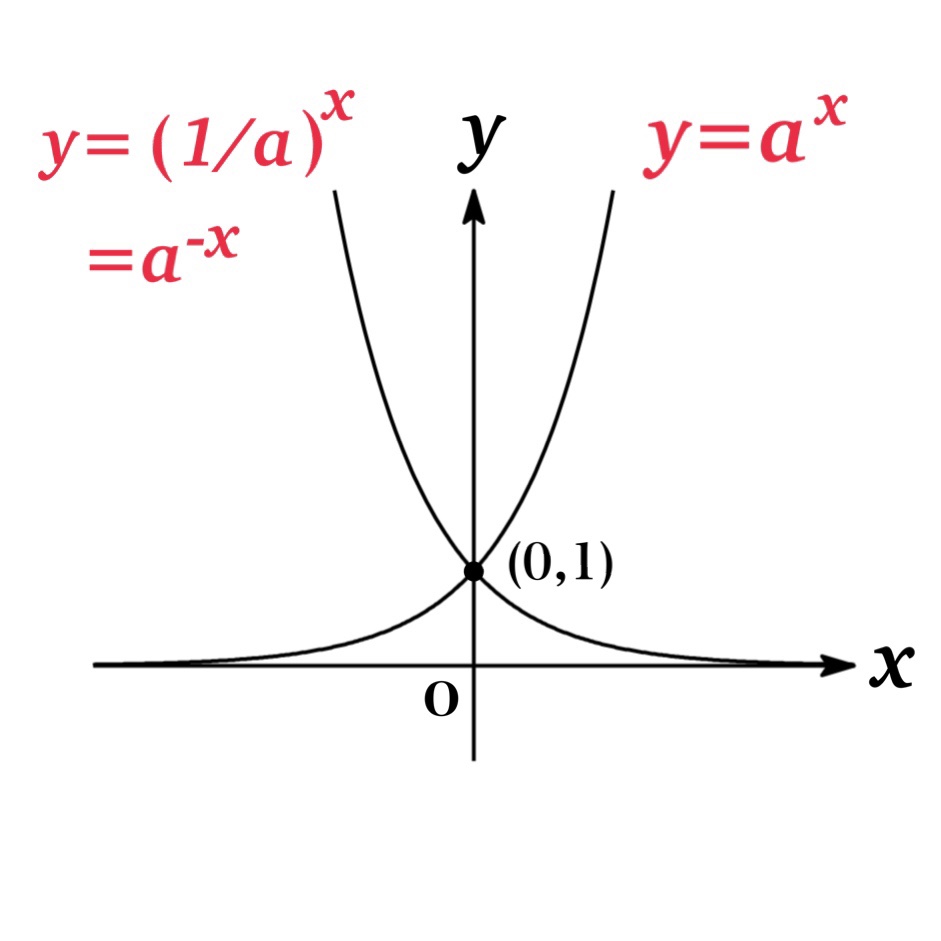
As you see from the graphs, all of \(y=a^{x}\) pass through the points\((0,1)\) and \((1,a)\), and the line \(y=0\) (that is x-axis) is a horizontal asymptote.
Comparison
| \(a\) | Comparison |
| \(0<a<1\) | \(x_{1}<x_{2}\ \ \ \longleftrightarrow \ \ \ a^{x_{1}}>a^{x_{2}}\) |
| \(a=1\) | \(a^{x_{1}}=a^{x_{2}}\) |
| \(a>1\) | \(x_{1}<x_{2}\ \ \ \longleftrightarrow \ \ \ a^{x_{1}}<a^{x_{2}}\) |
Inverse Function
Let a>0 and \(a\not=1 \). Then, the inverse function of the exponential function \(f(x)=a^{x}\) is defined as the logarithmic function with base a. That is
$$\log_{a} x=y\ \ \ \ \Longleftrightarrow a^{y}=x$$
Notice that if a>0 and \(a\not=1 \), the exponential function \(f(x)=a^{x}\)is either increasing or decreasing. Thus, it is one-to-one and we can define the inverse function of it.
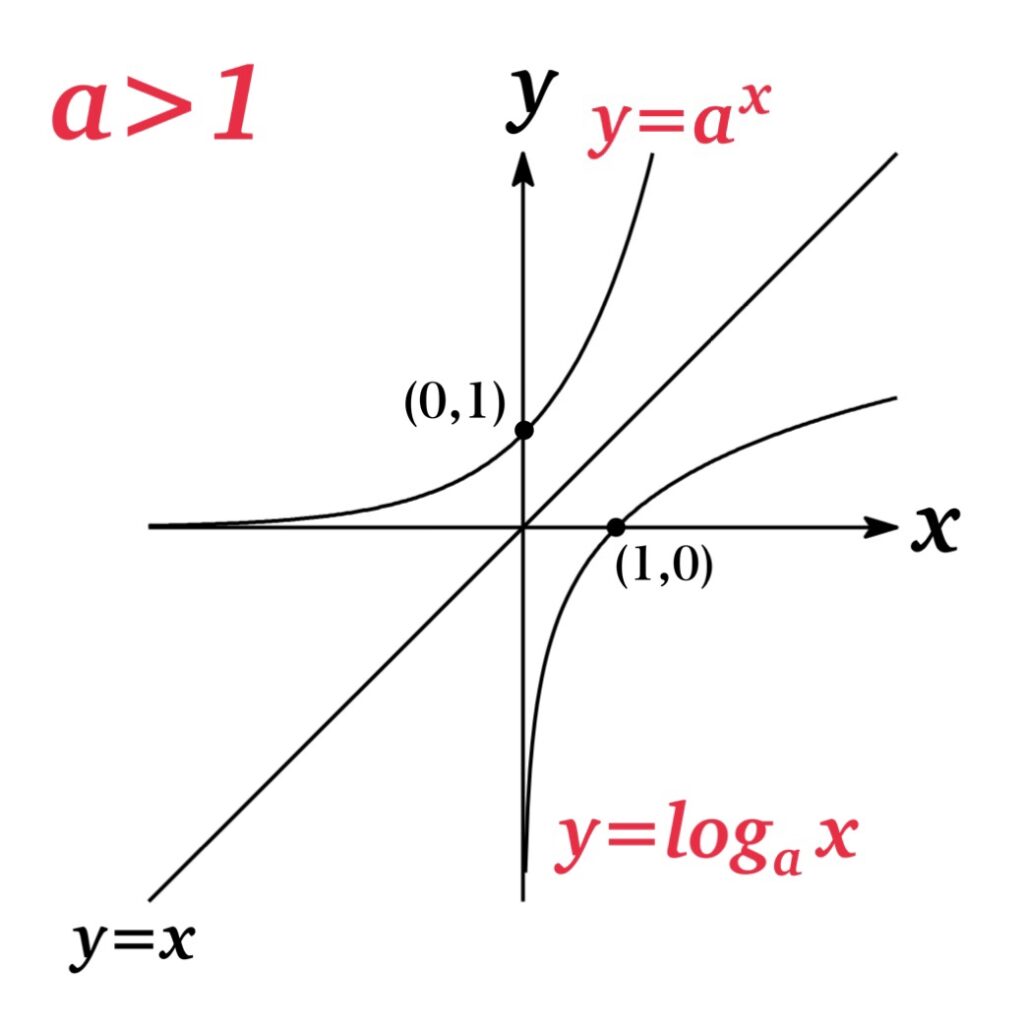
Derivatives / Integrals
$$\frac{d}{dx}[a^{x}]=a^{x}\log_{e} a $$
$$\int a^{x}\ dx=\frac{a^{x}}{\log_{e} a}+C$$
We use the fact that \(\mathrm{e}^{\log_{e} a}=a\).
$$\frac{d}{dx}(a^{x})=\frac{d}{dx}(\mathrm{e}^{\log_{e} a})^{x}=\frac{d}{dx}\mathrm{e}^{(\log_{e} a)x}=\mathrm{e}^{(\log_{e} a)x}\frac{d}{dx}(\log_{e} a)x=(\mathrm{e}^{\log_{e} a})^{x}(\log_{e}a)=a^{x}\log_{e} a$$
This can be also proved by using Logarithmic Differentiation Method. By the derivatives formula, we obtain integration formulas as above.